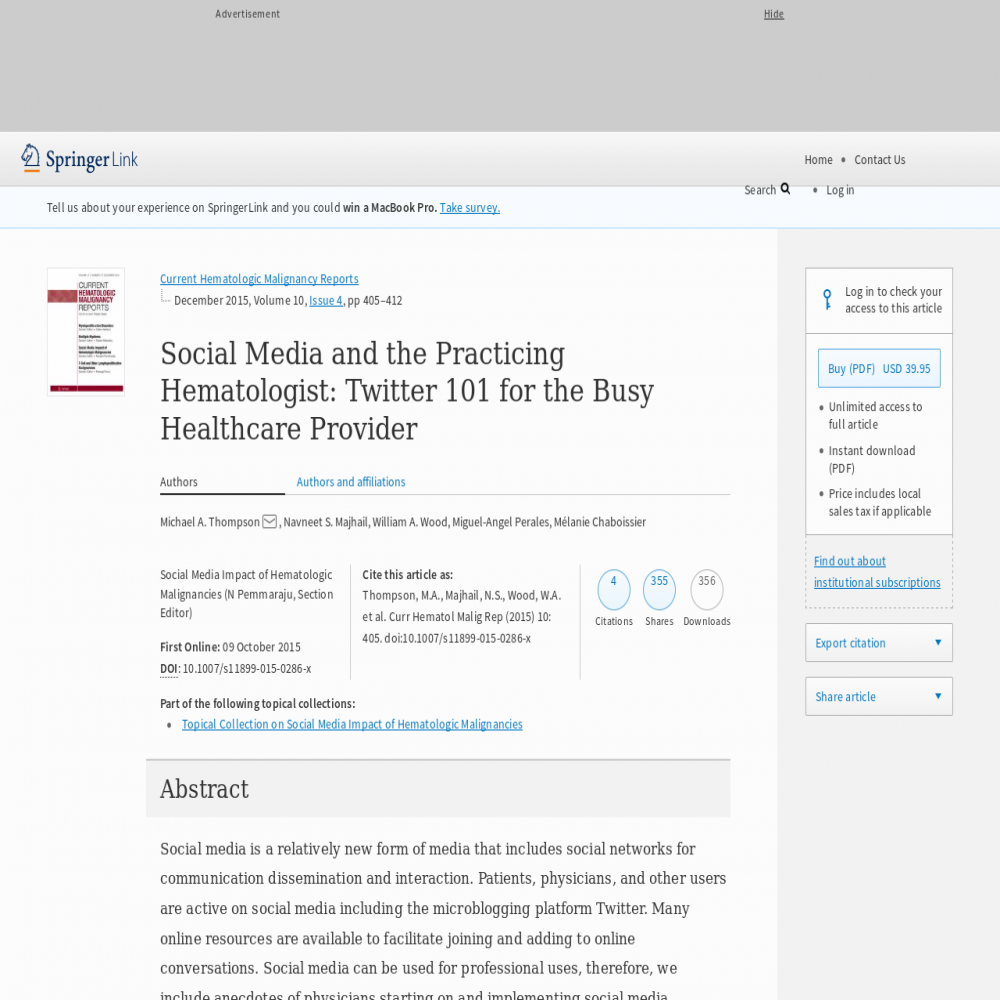Social Media and the Practicing Hematologist: Twitter 101 for the Busy Healthcare Provider
A healthcare social media research article published in Current Hematologic Malignancy Reports, October 9, 2015
- Title
- Social Media and the Practicing Hematologist: Twitter 101 for the Busy Healthcare Provider
- Authors (alpha)
- Michael A. Thompson, Miguel-Angel Perales, Mu00e9lanie Chaboissier, Navneet S. Majhail, William A. Wood
- Published
- October 9, 2015
- Journal
- Current Hematologic Malignancy Reports
- Impact Factor
- 2.2
- DOI
- 10.1007/s11899-015-0286-x
- Pubmed
- 26449718
- Altmetric
Abstract
Social media is a relatively new form of media that includes social networks for communication dissemination and interaction. Patients, physicians, and other users are active on social media including the microblogging platform Twitter. Many online resources are available to facilitate joining and adding to online conversations. Social media can be used for professional uses, therefore, we include anecdotes of physicians starting on and implementing social media successfully despite the limits of time in busy practices. Various applications demonstrating the utility of social media are explored. These include case discussions, patient groups, research collaborations, medical education, and crowdsourcing/crowdfunding. Social media is integrating into the professional workflow for some individuals and hematology/oncology societies. The potential for improving hematology care and research is just starting to be explored.
Altmetric
The Altmetric Attention Score is based on the attention a research article gets on the internet. Each coloured thread in the circle represents a different type of online attention and the number in the centre is the Altmetric Attention Score. The score is calculated based on two main sources of online attention: social media and mainstream news media.
Healthcare Social Media Research
See the full list of healthcare social media research articles with data from or reference to Symplur.
#hcsmR is a collaboration between Stanford Medicine X and Symplur.


